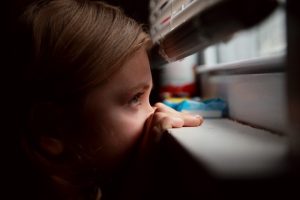
©Unsplash
With the use of an online questionnaire, more than 5000 families in the region of South Tyrol, Italy, were asked about the consequences of the first year of the COVID-19 pandemic for mental health and quality of life of children and adolescents. The results show that the pandemic was not only a burden for parents, but severely affected social and family life, media use, health and finally quality of life in children and adolescents (7-19 years).
The COVID-19 pandemic led to restrictions and school closures, which had a high impact on children and adolescents, including their social life, physical activity, health behaviours and media consumption. Also, existing mental health problems got worse or symptoms such as anxiety or depression newly developed.
The aim of the study was to find out more about the health-related quality of life and mental health of children and adolescents in South Tyrol (province in northwest Italy) during the pandemic. An online survey was completed by more than 5000 families with children and adolescents from seven to 19 years between May and June 2021. This data was compared to related results from German questionnaires.
The results show that the pandemic had a substantial impact on various aspects of family life and quality of life. It was found that one third of the surveyed children felt considerably or very burdened by the pandemic, which was mainly linked to changes in school life. This burden was also perceived by almost 50% of the parents. Regarding family life, 38% of parents mentioned that there were more arguments in the family than before the pandemic, especially with adolescents and young adults in the family. Also, social life of children and adolescents was affected, as more than three quarters of the parents indicated less social contact between their children/adolescents and their friends. In addition, digital media was used much more by adolescents. One third of children and adolescents stated a low (health related) quality of life. When comparing the age groups of seven to ten-year olds and 11-19-year-olds, younger children were less affected by low quality of life.
The COVID-19 pandemic also came along with a substantial increase of depressive symptoms, which was different between boys (10.3%) and girls (20.2%). Other psychological problems in children and adolescents were mentioned by 21.1% of parents. However, these became less during the second year of the pandemic. 24% of children and adolescents of all age groups highlighted emotional and almost 30% peer relation problems, which were higher in adolescents.
It was found that factors like socioeconomic status, migration background and limited living space had an additional negative influence on the health and quality of life of children and adolescents.
The extensive burden of the pandemic on children, adolescents and their families, where school played an important role, highlights the importance to choose the extent of restrictions wisely. The impact of the pandemic on children and adolescents in the following years is still uncertain, which is why careful observation and further research is necessary.
Paper available at: https://www.ncbi.nlm.nih.gov/pmc/articles/PMC9101425/
Full list of authors: Verena Barbieri, Christian Josef Wiedermann, Anne Kaman, Michael Erhart, Giuliano Piccoliori, Barbara Plagg, Angelika Mahlknecht, Dietmar Ausserhofer, Adolf Engl, Ulrike Ravens-Sieberer
DOI: 10.3390/ijerph19095220

